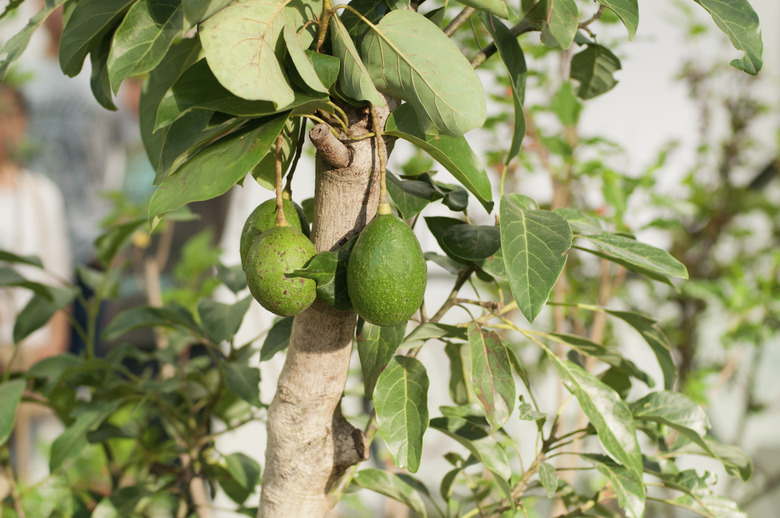Avocado Tree Zones
We may receive a commission on purchases made from links.
Avocados (Persea americana) originated in Mexico and Central America. The first records of avocados were discovered in Aztec writings, and avocado seeds were discovered buried inside Aztec cities along with other rubble. (The modern name "avocado" actually comes from the Aztec word "ahuacati," meaning testicles, which described how the avocado fruit looked hanging on the tree.) Avocados are now grown in warm and tropical climates around the world, and they're perennials in U.S. Department of Agriculture plant hardiness zones 9 through 12, depending on cultivar.
Avocado Preferred Climate
Avocado Preferred Climate
The preferred avocado tree zones are tropical and Mediterranean climates where temperatures stay warm year-round. The avocado tree is a tropical plant and does not like frost or temperatures under 50 degrees Fahrenheit. In spite of that, mature trees can tolerate brief periods at temperatures as low as 28 F.
In addition, avocado trees prefer high humidity of 60 to 80 percent. They can also grow in drier climates (with no less than 40 percent humidity), but more problems may occur with the fruit or tree. The tree needs a high level of moisture and plenty of nutrients in the soil.
South of the U.S. Border
South of the U.S. Border
Mexico, Central America and some regions of South America have the frost-free climate, high water quality and rich soil necessary to keep avocados healthy. Approximately one-half of all avocados sold in the United States come from Mexico, with Indonesia and the USA growing an additional one-third. Central America and South America provide the rest of the avocados for the U.S. market.
U.S. Avocado Tree Zones
U.S. Avocado Tree Zones
It is possible to grow avocados in the United States in certain conditions. The best areas for avocado trees are in the West, Southwest, along the Gulf Coast and in the deep South, where many gardens are in the ideal avocado hardiness range across USDA zones 9 through 12. These zones are relatively frost-free and have fairly even climates.
All areas in these zones may not be suitable, however, because avocado trees also need moisture and rich soil. Many of the warmer zones in the United States are too dry for avocado growing.
In less than ideal climates, dwarf cultivars such as 'Wurtz' can be grown in containers in warm sunrooms and greenhouses, where winter temperatures remain above 55 F and summers between 75 and 85 F. Use a hand truck to move the tree out into the summer garden for a "vacation" and take it indoors when fall arrives.
Australia Avocado Industry
Australia Avocado Industry
Australia has a large avocado-growing industry, with over 70 varieties grown all over the country. Avocado trees were first introduced to Australia in 1840. The seeds were planted in the royal garden, and it was determined that Australia was an ideal growing climate for avocados.
While Australia did not export its avocados to any other country in 2010, since then the export market has been developed and is increasing. By 2017-2018, the export market encompassed 2.3 percent of Australia's total avocado production. More than 80 percent of those exports went to Malaysia and Singapore.
Avocado Growing Latitudes
Avocado Growing Latitudes
Latitudes at the 0 degree latitudinal mark (right around the equator) grow the healthiest avocados. However, avocado trees can grow in warm, frost-free gardens between the latitudes of 30 degrees north to 35 degrees south — as far north as Maryland and as far south as South Africa and Australia.
